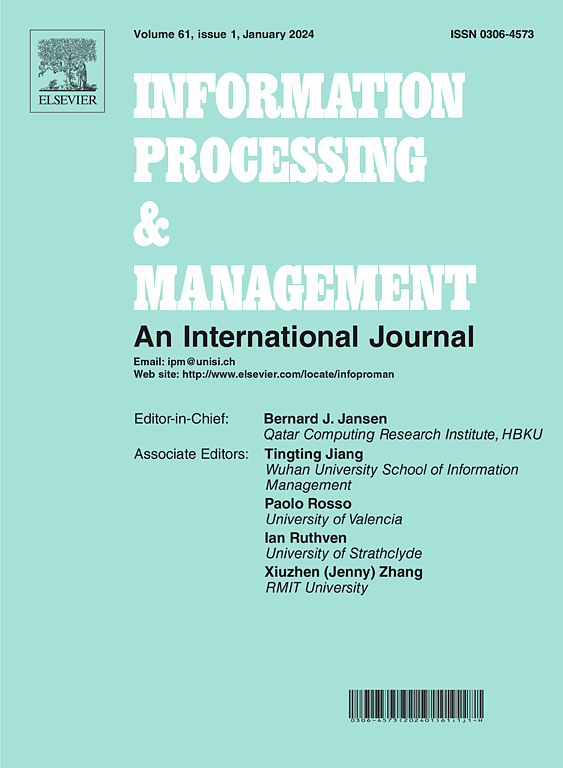序列推荐的分布引导图学习
IF 7.4
1区 管理学
Q1 COMPUTER SCIENCE, INFORMATION SYSTEMS
引用次数: 0
摘要
顺序推荐通过从用户的序列中捕获行为模式来预测下一个项目。图神经网络(GNN)最近在顺序推荐中获得了广泛的应用,它有效地捕获了高阶信息,显著提高了推荐性能。然而,现有的一些基于gnn的方法将图中的节点嵌入表示为固定向量,无法捕捉到节点之间关系转移所产生的不确定性。为了应对上述挑战,我们提出了面向顺序推荐的分布引导图学习(DGLSR)。具体来说,它利用高斯分布(即均值和协方差嵌入)来表示用户-项目二部图中的节点,在保持图结构的同时建模节点的不确定性。随后,我们使用图卷积网络更新用户和项目节点分布嵌入,然后引入个性化分布嵌入融合操作对它们进行整合,从而生成最终的序列表示。此外,我们还设计了一种时间Wasserstein自注意机制。该机制利用Wasserstein距离来衡量序列中任意两个项目之间的分布差异,同时增强模型对时间动态的敏感性,从而提高下一个项目预测的准确性。涉及四个真实数据集的实验表明,我们开发的DGLSR在基准指标上超过了SOTA方法的性能。本文章由计算机程序翻译,如有差异,请以英文原文为准。
Distribution-guided Graph Learning for Sequential Recommendation
Sequential recommendations predict the next item by capturing behavioral patterns from a user’s sequence. Graph neural networks (GNN) have recently gained popularity in sequential recommendation for effectively capturing high-order information, which notably improves recommendation performance. However, some existing GNN-based methods represent the node embeddings in the graph as fixed vectors, which fails to capture the uncertainty generated by the transition of relations between nodes. To cope with the above challenge, we propose Distribution-guided Graph Learning for Sequential Recommendation (DGLSR). Specifically, it utilizes the Gaussian distribution (i.e., mean and covariance embeddings) to represent nodes in the user–item bipartite graph, modeling the node uncertainty while preserving the graph structure. Subsequently, we use a graph convolutional network to update user and item node distribution embeddings, and then introduce a personalization distribution embedding fusion operation to integrate them, which generates the final sequence representation. Furthermore, we design a temporal Wasserstein self-attention mechanism. This mechanism utilizes the Wasserstein distance to measure the distributional differences between any two items in the sequence while enhancing the model’s sensitivity to temporal dynamics, thereby improving the accuracy of the next item prediction. Experiments involving four real-world datasets reveal that the DGLSR we developed exceeds the performance of SOTA methods on benchmark metrics.
求助全文
通过发布文献求助,成功后即可免费获取论文全文。
去求助
来源期刊

Information Processing & Management
工程技术-计算机:信息系统
CiteScore
17.00
自引率
11.60%
发文量
276
审稿时长
39 days
期刊介绍:
Information Processing and Management is dedicated to publishing cutting-edge original research at the convergence of computing and information science. Our scope encompasses theory, methods, and applications across various domains, including advertising, business, health, information science, information technology marketing, and social computing.
We aim to cater to the interests of both primary researchers and practitioners by offering an effective platform for the timely dissemination of advanced and topical issues in this interdisciplinary field. The journal places particular emphasis on original research articles, research survey articles, research method articles, and articles addressing critical applications of research. Join us in advancing knowledge and innovation at the intersection of computing and information science.
 求助内容:
求助内容: 应助结果提醒方式:
应助结果提醒方式:


